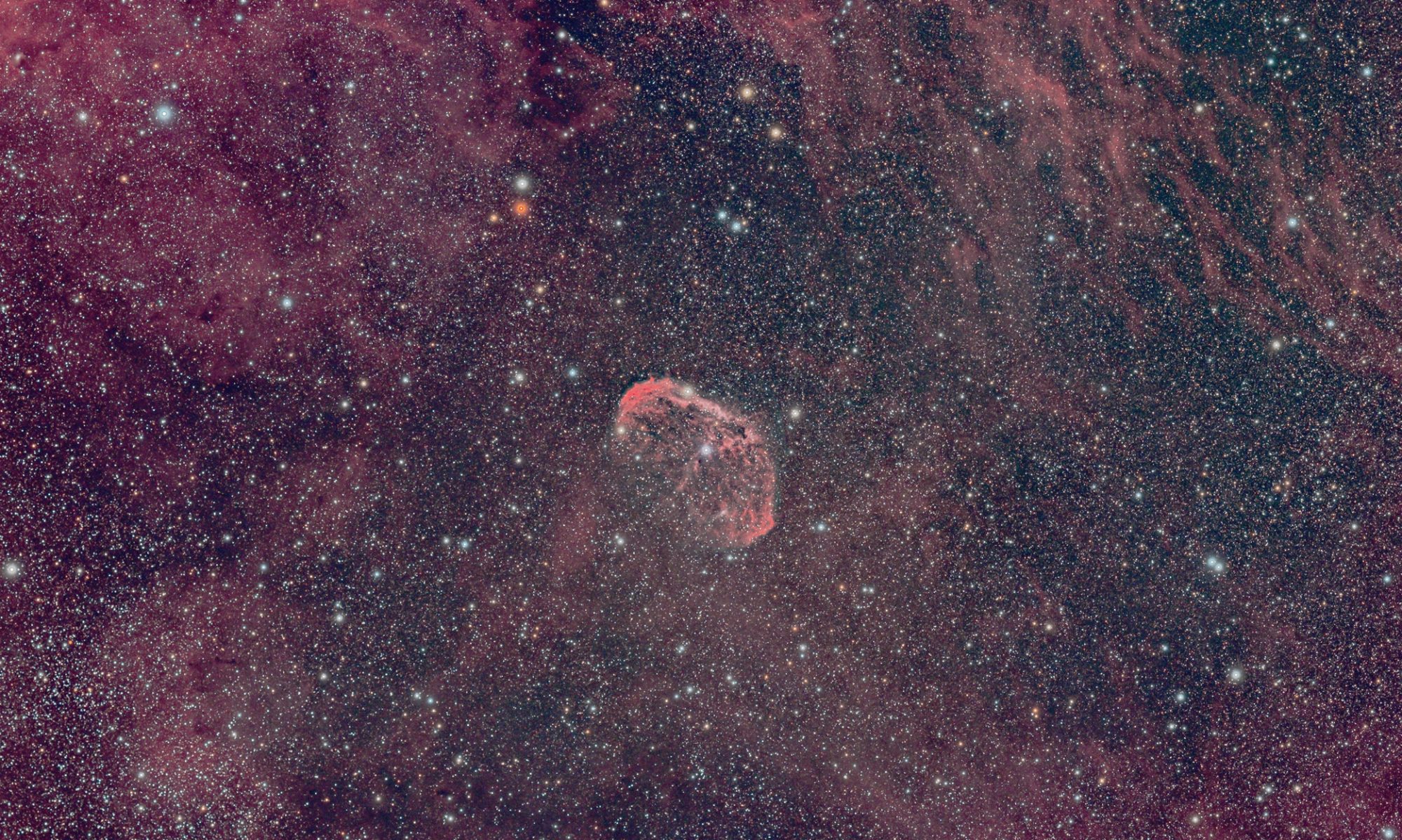This is a very familiar sight and thousands of pictures have been taken of this little “seahorse” or horsehead in the sky. Taken with the Celestron C11 on an EQ8 mount, Starizona LF corrector for Schmidt-Cassegrains, a Nikon D750 DSLR modified for extra H-Alfa sensitivity. 22 frames of 300 seconds each are combined in this image
M51: the Whirlpool Galaxy in Canes Venatici
This is a famous sight: Messier 51, also known as the Whirlpool Galaxy (not hard to see why!) in the Hounting Dogs constellation (Canes Venatici).
I remember being able first time ever to see this galaxy with 8×40 binoculars when I was 14. That was a major achievement back then. We spent the night under the stars in April with three friends, and as the spring sky is not very rewarding to binocular users, at least this one made our hearts beat faster.
In this picture, images from last year in April are combined with images from February 15th, 2018. All are taken with the C11, Nikon D750 and now in February with the ASI174MM as a guiding camera, replacing the Lacerta MGEN for off-axis guiding work.
The ASI174MM has delivered every time since it’s purchase in January a decent guiding star. With PHD combined with BackYardNikon the guiding goes excellent.



